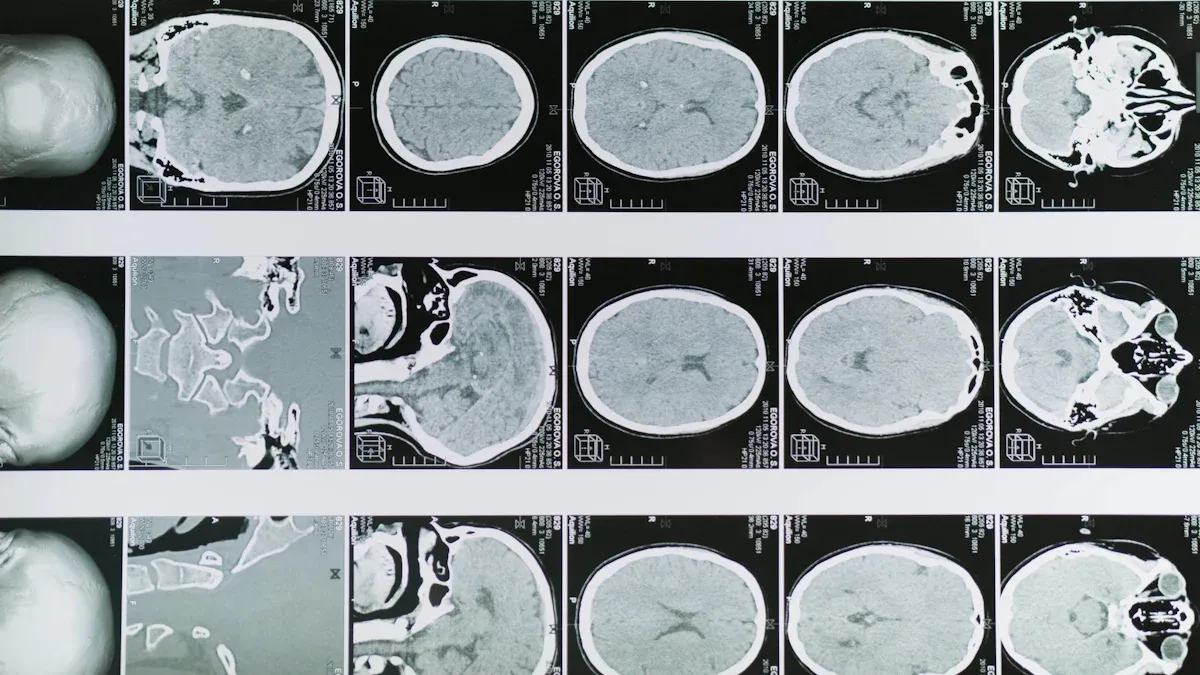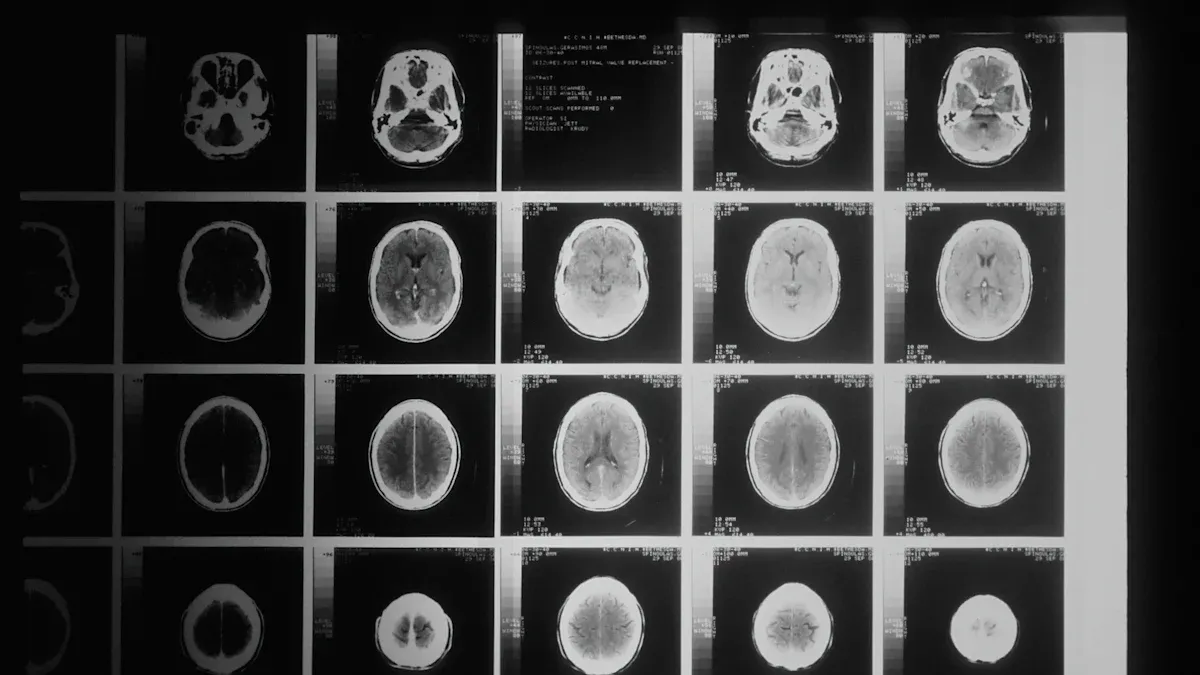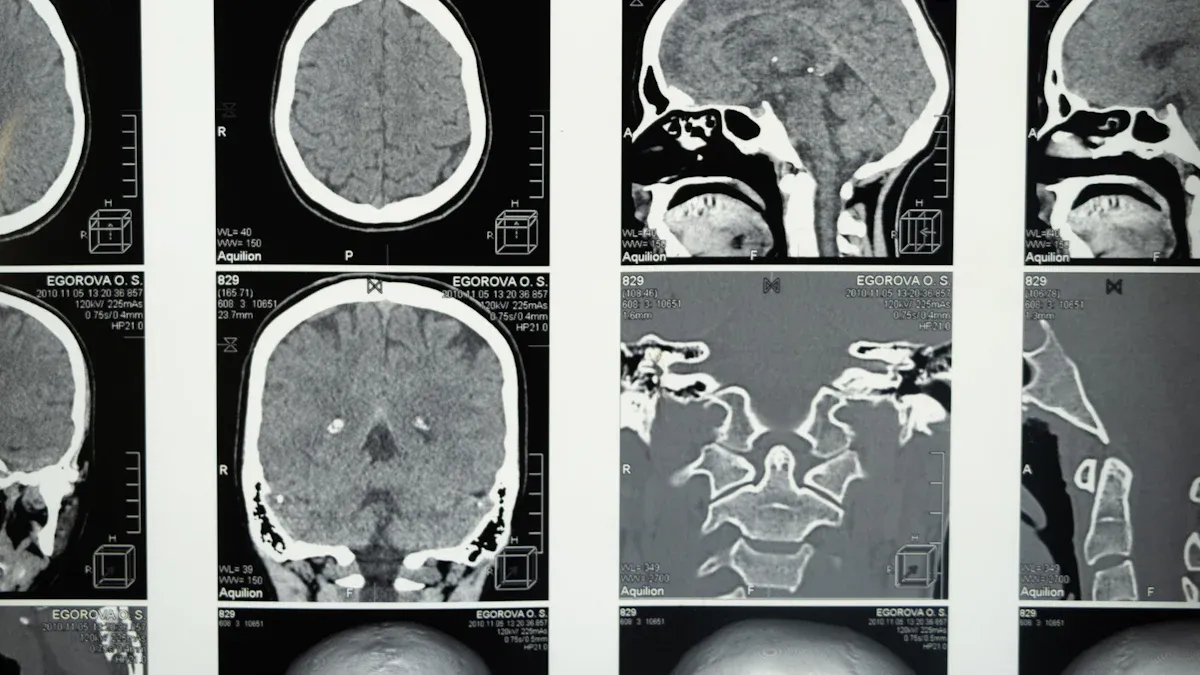Optic Nerve Glioma-What Are the Symptoms and Diagnosis Methods

Optic nerve glioma is a rare condition that can significantly impact your vision. This type of tumor develops in the optic nerve, which connects your eyes to your brain. You might notice changes in how you see, such as blurred vision or difficulty recognizing colors. In some cases, physical symptoms like eye bulging or discomfort around the eyes may appear. Early detection plays a vital role in managing this condition effectively. By recognizing the signs and seeking medical advice, you can take the first step toward protecting your vision and overall health.
Key Takeaways
Optic nerve glioma can change your vision. You may see blurry images or have trouble seeing colors. Talk to a doctor if this happens.
Your eyes might bulge or feel sore. These are common signs. Finding the problem early can make it easier to treat.
Doctors check for optic nerve glioma using eye exams, scans, and vision tests. Catching it early gives better treatment choices.
If you have bad headaches or changes in hormones, tell a doctor. These might be signs of optic nerve glioma or something else.
Finding optic nerve glioma early helps with better treatments. See a doctor if you notice anything unusual.
Symptoms of Optic Nerve Glioma

Vision-Related Symptoms
Optic nerve glioma often begins with changes in your vision. You may notice blurred or double vision, making it harder to focus on objects. Gradual vision loss in one or both eyes is another common sign, affecting about 85% of individuals. Colors might appear less vibrant, and distinguishing between them could become challenging. In some cases, you might experience nystagmus, which causes your eyes to move involuntarily, or strabismus, where one eye appears misaligned. These symptoms can interfere with daily activities like reading or recognizing faces.
Physical Symptoms
Physical changes around your eyes can also signal optic nerve glioma. Proptosis, or bulging of one or both eyes, occurs in 95% of cases. You might feel discomfort or pain near your eyes, along with noticeable swelling or redness. During an eye exam, a doctor may observe a swollen optic disc, which indicates pressure on the optic nerve. These physical symptoms often lead to the initial suspicion of this condition.
Other Associated Symptoms
In addition to vision and physical changes, you might experience other symptoms. Headaches are common, especially in children. Hormonal imbalances can cause weight fluctuations or growth delays. Some individuals feel unusually sleepy during the day or lose their appetite. In severe cases, memory problems may arise. These symptoms, combined with vision issues, often prompt further medical evaluation.
Note: If you notice any of these symptoms, consult a healthcare provider promptly. Early detection of optic nerve glioma can improve treatment outcomes and reduce complications.
Diagnosis Methods for Optic Nerve Glioma

Physical and Neurological Exams
Doctors often begin diagnosing optic nerve glioma with physical and neurological exams. These tests evaluate your vision and overall brain function. Here’s a breakdown of the standard procedures:
Procedure Type | Details |
|---|---|
Eye Exam | Checks visual function, including sharpness of vision, visual field, and color perception. |
Neurological Exam | Measures brain function, such as memory, hearing, muscle strength, balance, and reflexes. |
Health History | Includes a physical exam and may involve endocrine function tests if the tumor is near the pituitary gland. |
During these exams, your doctor may test your eye movements and pupil responses. They might also assess your visual acuity and fields to detect any blind spots or vision loss. By examining the optic nerve, they can identify swelling or damage that could indicate a tumor.
Imaging Tests
Imaging tests provide a detailed view of the optic nerve and surrounding areas. Magnetic Resonance Imaging (MRI) is the preferred method for diagnosing optic nerve glioma. It offers high-resolution images that reveal specific features like optic nerve enlargement, kinking, or buckling. On T2-weighted images, the tumor often appears brighter than the surrounding brain tissue. Gadolinium-enhanced MRI can highlight the tumor’s structure and extent, making it easier to assess its progression.
If MRI is unavailable, doctors may use a CT scan. However, CT scans expose you to radiation, which is less ideal, especially for children. While CT can detect the tumor, it is less sensitive than MRI for evaluating intracranial involvement.
Vision Assessments
Specialized vision assessments help determine how optic nerve glioma affects your eyesight. An ophthalmologist may perform tests like visual acuity assessments, color vision testing, and visual field evaluations. These tests identify changes in your ability to see clearly, distinguish colors, or detect objects in your peripheral vision.
Optical coherence tomography (OCT) is another valuable tool. This non-invasive imaging technique measures the thickness of the retinal nerve fiber layer (RNFL). A thinner RNFL often indicates optic nerve damage. OCT also helps monitor the tumor’s progression over time, providing critical insights into your condition.
Tip: Early and accurate diagnosis through these methods can improve treatment outcomes and help preserve your vision.
Additional Diagnostic Procedures
Biopsy in Rare Cases for Confirmation
In most cases, doctors diagnose optic nerve glioma using imaging tests and vision assessments. However, when these methods fail to provide a clear diagnosis, a biopsy may be necessary. During this procedure, a small sample of the tumor tissue is removed and examined under a microscope. This helps confirm whether the tumor is a glioma or another type of growth.
Biopsies are rarely performed because they carry certain risks, especially when dealing with delicate structures like the optic nerve. The procedure could potentially damage the nerve, leading to further vision loss. For this reason, doctors only recommend a biopsy when absolutely necessary. If your doctor suggests this step, they will carefully explain the risks and benefits to help you make an informed decision.
Note: Biopsies are typically a last resort. Advances in imaging technology have made non-invasive diagnostic methods highly reliable for identifying optic nerve glioma.
Blood Tests to Rule Out Other Conditions
Blood tests can play a supportive role in diagnosing optic nerve glioma. These tests help rule out other conditions that might cause similar symptoms, such as infections or autoimmune disorders. For example, certain blood markers can indicate inflammation or hormonal imbalances, which may point to a different underlying issue.
Your doctor might also order blood tests to check for genetic conditions like neurofibromatosis type 1 (NF1). This condition is often associated with optic nerve glioma, especially in children. Identifying NF1 can provide valuable insights into the tumor’s behavior and guide treatment decisions.
While blood tests alone cannot confirm optic nerve glioma, they provide important clues that complement other diagnostic methods. By combining these results with imaging and vision assessments, your doctor can develop a more accurate diagnosis.
Importance of Early Detection
Benefits of Early Diagnosis
Detecting optic nerve glioma early can significantly improve your treatment outcomes. Early diagnosis allows doctors to monitor the tumor closely and intervene before it causes severe complications. For example, if the tumor is small and not growing, observation might be enough to manage the condition. In cases where intervention is necessary, early detection provides more options, such as surgical excision or chemotherapy, to preserve vision and prevent further damage.
The long-term outcomes for patients diagnosed early highlight the importance of timely detection. Consider the following statistics:
Outcome | Statistic |
|---|---|
20-year conditional overall survival (C-OS) | |
Late events-free survival | 43.5% (95% CI = 36-51) |
Percentage of survivors with health conditions | 95% |
Visual acuity issues | 109 patients (<1/10) |
Pituitary deficiency | 106 patients |
Neurocognitive impairment | 89 patients |
These figures emphasize the benefits of early diagnosis in improving survival rates and reducing complications. By addressing the tumor early, you can minimize its impact on your vision and overall health.
When to See a Doctor
You should consult a doctor if you notice persistent vision problems, such as blurred or double vision. Physical changes in your eyes, like bulging or redness, also warrant immediate attention. Symptoms like frequent headaches, hormonal imbalances, or growth delays in children could indicate underlying issues, including optic nerve glioma.
Doctors use various management strategies after early detection. These include:
Observation: Monitoring the tumor if it is stable and vision remains unaffected.
Surgical Excision: Removing the tumor when it grows rapidly or affects vision.
Radiation Therapy: Treating cases where surgery is not an option, and symptoms worsen.
Chemotherapy: Managing progressive cases, especially in children, to delay radiation therapy.
Recognizing these signs early and seeking medical advice can help you take control of your health and improve your quality of life.
Optic nerve glioma affects your vision and physical appearance in noticeable ways. You might experience symptoms like blurred vision, eye bulging, or even headaches. Diagnosing this condition involves a combination of physical exams, imaging tests, and specialized vision assessments. These methods help doctors identify the tumor and plan the best course of action. Early detection plays a crucial role in managing optic nerve glioma effectively. By consulting a healthcare provider promptly, you can improve your chances of preserving your vision and overall health.
FAQ
What causes optic nerve glioma?
Optic nerve glioma develops from abnormal growth of glial cells in the optic nerve. The exact cause remains unknown, but it often links to genetic conditions like neurofibromatosis type 1 (NF1). If you or your child has NF1, regular check-ups can help detect this condition early.
Is optic nerve glioma cancerous?
Most optic nerve gliomas are low-grade tumors, meaning they grow slowly and are not highly aggressive. These tumors are typically non-cancerous (benign). However, they can still affect vision and require treatment to prevent complications.
Can optic nerve glioma spread to other parts of the body?
Optic nerve gliomas rarely spread to other parts of the body. They usually remain localized to the optic nerve or nearby brain structures. Early diagnosis and treatment can help manage the tumor and reduce the risk of further complications.
How is optic nerve glioma treated?
Treatment depends on the tumor’s size, location, and symptoms. Options include observation, surgery, chemotherapy, or radiation therapy. Doctors often choose chemotherapy for children to delay radiation therapy. Your healthcare provider will recommend the best approach based on your specific case.
Can optic nerve glioma be cured?
While optic nerve glioma cannot always be cured, early detection and treatment can control its growth and preserve vision. Many patients live healthy lives with proper management. Regular follow-ups with your doctor ensure the best possible outcomes.
Tip: If you notice vision changes or other symptoms, consult a healthcare provider promptly for evaluation.
See Also
Exploring Glioma: Types and Key Characteristics
Choroid Plexus Carcinoma: Symptoms and Treatment Options
Ependymoma: Overview of Symptoms and Key Insights
Brainstem Glioma: Types and Important Information
Lymphomatoid Granulomatosis: Symptoms and Treatment Approaches
